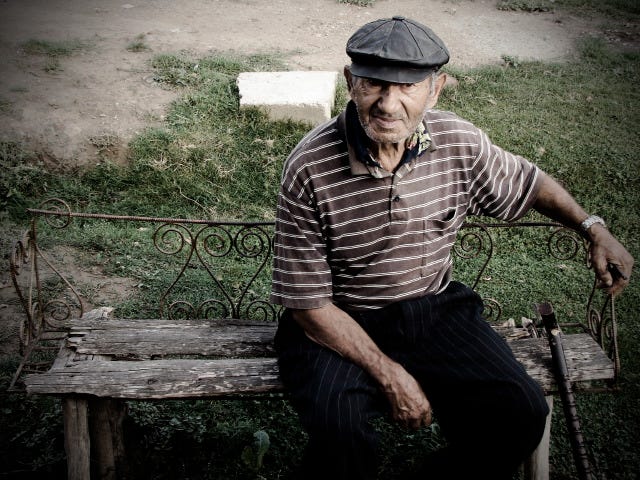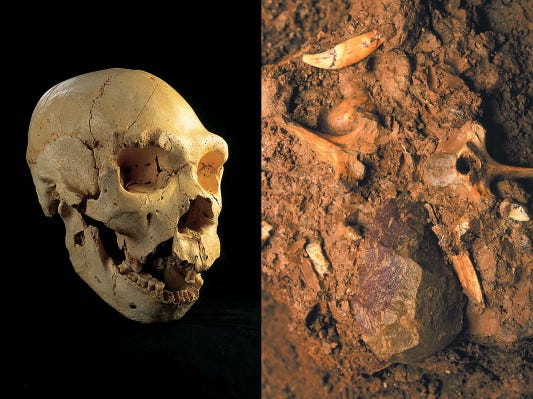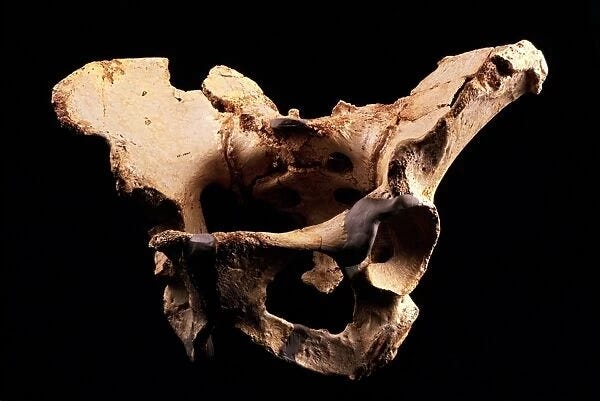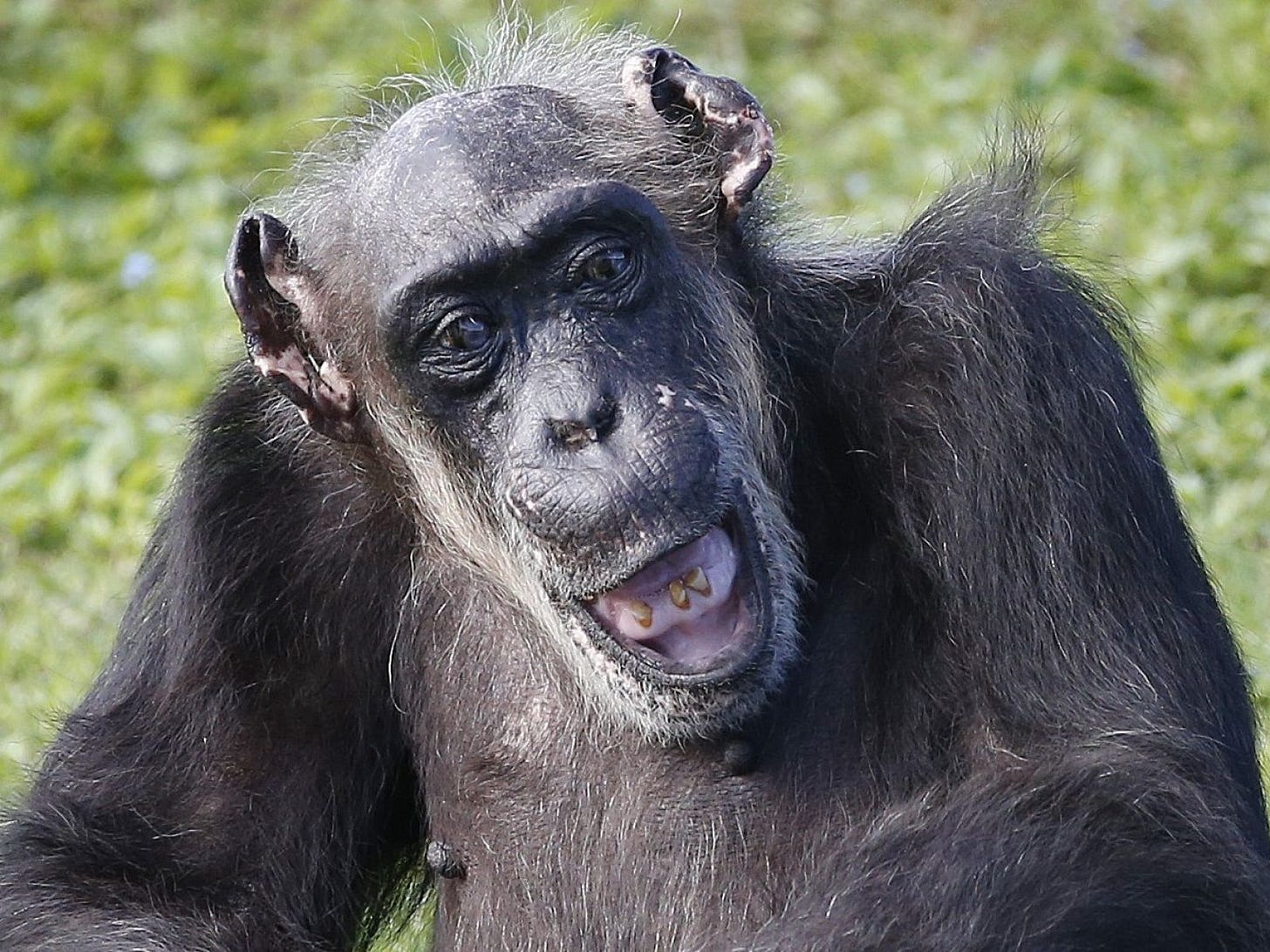The good of becoming old: Human life history and the "natural" human lifespan

Philosopher of biology Peter Godfrey-Smith points out that death is a universal biological phenomenon, yet our typical human life history is not representative for all living things. Humans go (if all goes well) through distinctive phases of infancy, childhood, adolescence, adulthood, and then finally senescence (old age) where it seems like we sort of run out of life, like a clock that slowly unwinds until it is spent and we die. But many other creatures have different kinds of lifespans—think of bacteria, trees, or mice. You can see the video fragment from Closer to Truth below to hear it in Godfrey-Smith's words. Not all creatures experience old age, and even for humans it is a relatively recent phenomenon in our evolutionary history.
Robert Kuhn, the host of the show, then asked Godfrey-Smith what our life history means for the meaning of life, and Godfrey-Smith replied he's still working on an answer.
So meanwhile, here are some of my thoughts on human life history inspired by my interest and work in paleoanthropology. In brief: I think it's good we can become old though death is not bad. Death is part of life. We humans become much older than you might expect from a mammal with our size and diet, and it's not due to modern medicine alone.
What is a “natural” life history for humans?
It's difficult to answer what a “natural” life history for humans looks like because of the long enmeshing of our cultural practice with our life histories throughout the Pliocene, Pleistocene and Holocene. Let's have a lightning-quick look at the human evolutionary past to see what we can say. Life history throughout human history has been highly variable, due to the frequent occurrence of epidemics and pandemics in no small part.
We have some clues for the Middle Pleistocene, around 500,000 years ago. Hominins rarely survived beyond their forties, with the majority of individuals barely making their twenties. To consider one large sample, the age of 28 individuals of Sima de los Huesos was calculated using dental wear and dental mineralization. The majority of individuals (64%) in Sima de los Huesos died before the age of 20, with only three individuals older than 35, and these older individuals had significant disabilities (de Castro et al. 2004).
You can see here below the pelvis of one Sima de los Huesos individual, a man of about 40 years old, whose fossil remains are nicknamed Elvis (because all we have left is his pelvis, this is the sense of humor of Spanish archaeologists). Elvis suffered significant damage and disease in his spine, including lumbar kyphotic deformity, spondylolisthesis, and Baastrup disease.
Later on in human evolution, particularly in the Late Pleistocene (ca. 126,000 years ago to about 10,000 years ago), the ratio of older adults to younger adults in the fossil record increased substantially. Or, to put it differently, humans became much older.
Caspari and Lee (2004) analyzed a large sample of fossils and their age at death estimates and found that older age starts to increase about 30,000 years ago. This pattern even holds when they controlled for a possible bias in burials (an alleged bias towards burying older individuals).
Even if you take the burials away, the analysis holds: old age only became common relatively late in human prehistory. The pattern also holds across species, for example, there is no significant difference in survival of old people in Neanderthals and early Homo sapiens in West Asia. However, there is a difference between European and West Asian Neanderthals, with West Asian Neanderthals living significantly longer than European Neanderthals.
So to sum up: for the longest part of our evolutionary history, humans did not become old. We were lucky indeed to make it to age 40. This pattern was universal for all hominin species until 30,000 years ago, when we see the emergence of truly elderly individuals, age 60 and over.
How old do hunter-gatherers become?
Very often, hunter-gatherers are taken as a kind of model for human life history, behavioral patterns etc. I do find this problematic, but in the case of life history it does make sense because these are human populations that have been well-studied and who do not have reliable access to modern healthcare.
A detailed examination by Gurven and Kaplan (2007) of recent and contemporary hunter-gatherer cultures without access to western medical care coheres with the Late Paleolithic mortality profile, not the early one. That is to say, modern hunter-gatherers regularly become old.
Mean age at death alone is not a reliable measure of longevity, in part because of the skew of elevated child mortality until age five (which only became significantly reduced thanks to modern medical care). An estimated 20.3% of human hunter-gatherer children die in their first year of life (Hewlett, 1991), which brings the average life expectancy downward significantly.
It is more informative to look at survival rates past a given age. In their large sample of hunter-gatherers, Gurven and Kaplan (2007) note that about 57% of people survive to age 15. Of those who make it until age 15, 64% live until age 45. For those who reach age 45, the mean remaining life expectancy is about two decades.
Though hunter-gatherer lives are significantly shorter than those of people living in industrialized nations, it still means that many people live well beyond their reproductive years. To put it into perspective, Gurven and Kaplan (2007, 331) write, “For groups living without access to modern health care, public sanitation, immunizations, or adequate and predictable food supply, it seems that still at least one-fourth of the population is likely to live as grandparents for 15–20 years.”
Comparing human lifespans to chimpanzees
We can compare these mortality profiles to our closest living relatives, chimpanzees. Their lives are shorter, although there are outliers in zoos such as Little Mama (pictured above) who died in a Florida zoo age 79 in 2017. Typically, chimpanzees in the wild have a life expectancy at birth in their late 20s. Also striking is the difference in remaining lifespan. For example, if you are Hadza and reach age 45, you can still expect to live about twenty years, compared to a Ngogo chimpanzee, who only has about 10 years left.
If you want to nerd out over a graph, this one from Gurven and Kaplan shows human populations (above) including 18th-century Sweden, recent !Kung and Hadza. All populations without access to modern medicine, including vaccine, antibiotics, etc. The bottom graph is wild chimpanzees, where it's clear overall life expectancy is much lower. Looking at hominin prehistoric data, it sits in between chimpanzees and humans.
Even captive chimpanzees, with best available care, seldom live past age 50 (with some exceptions as noted above). The healthy human lifespan is about seven decades (by which is meant lifespan with relatively few limiting disabilities, humans obviously do live good lives frequently beyond this mark).
In short: though humans who did and do not have access to modern medicine and things like vaccines have shorter lifespans, a hunter-gatherer who survives into adulthood has a decent chance of reaching old age, at least age 60 to 70, and seeing her grandchildren. This is significantly longer than chimpanzees who rarely make it past age 50-55.
How do humans become so old?
We become old then, not only because of modern medicine. Caspari and Lee (2004) hypothesize that old age became common thanks to cultural institutions to help and subsidize older people, who were valued for their wisdom, which encompasses both an extensive found of knowledge of a wide range of practical situations, and an ability to make prudent decisions in the face of such conditions.
Transfers happen at the end of life, so that older people are subsidized by younger people whose caloric output is higher. Taking care of the old is a common feature in many communities. For instance, among Inuit populations is a strong ongoing tradition of thinking about successful aging (see this article, Colling 2001), and “country food” (hunted seal meat) is often given as “country food” to older community members with lowered mobility as a form of intergenerational generosity. The Confucian tradition has the practice of taking care of your parents and respect for the elderly, both their physical and mental wellbeing. This is just one case, but many human groups provide some form of support and help for elderly members, and it is common for hunter-gatherers to do so in the form of transfers of food (see Gurven et al. 2012).
We have some physiological adaptations that make us more resilient against the senescence effects of old age (such as pleiotropy), for example, there is some evidence for positive selection for alleles that protect older individuals from developing Alzheimer’s and other forms of postreproductive cognitive decline. The protective CD33 allele (an immunoregulative gene) is human-specific, and absent in chimpanzees. Inclusive fitness might have favored its evolution and spread among humans (Schwarz et al., 2016).
Given that a lot of recent discourse is about how old people would be a burden to society (in the distinctively negative valence of discussions around “aging populations”) we might wonder why humans become so old, and what prompted our ancestors to take care of their elderly community members.
Old age as a source of wisdom
Human communities that began to take care of elderly relatives didn't only do it for the sake of these people having good, fulfilling lives They also did it for their own benefit. Some paloeanthropologists, such as Sang-Hee Lee think that there is a link between the remarkable cultural advances of the Late Pleistocene and human longevity.
The idea that old age confers wisdom is both historically and cross-culturally widespread. For example, Joseph Marshall argues that Lakota people see wisdom as life’s gift. It is the result of direct experience, combined with indirect learning from others, and allows an individual to know “what to do or what to say, or what not to do or what to say”; it is “the sum of experiences—the highs and the lows, the good and the bad, the successes and failures—that are part of our life’s journey.”
This is analogous to Mengzi’s idea of wisdom as a deliberative virtue, an ability to flexibly respond in a variety of circumstances, with prudent concern for oneself and others. You learn this from experience, which is a patient though difficult teacher. We can see this also in the Analects (2: 4) where Confucius is said to only have been able to follow his heart without overstepping the bounds of propriety age seventy. If it took even such as sage as Confucius this long to become an ethical expert, then we can be glad that many of us do have the time and the opportunity to live out our lives to the full. Differences in life expectancy between e.g., Native Americans and white people in the US are an injustice, and during the initial phase of the pandemic in 2021 many Native American tribes mourned the loss of their elders, whose knowledge was irreplaceable.
With old age you have the transmission of oral knowledge from grandparents to grandchildren, the beautiful last swan song book or composition, the living reminders of the horrors of war, but also about happy times and good outcomes and solutions. I don't think death is bad. Death is part of life. Also, a short life can be fulfilling and meaningful. That being said, old age is a valuable part of our life history, which we should cherish, not bemoan or demean, or see as intrinsically bad.







